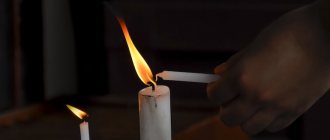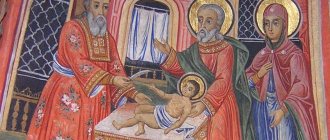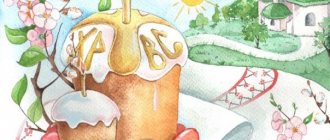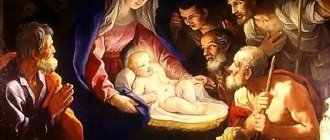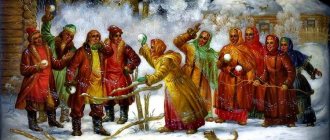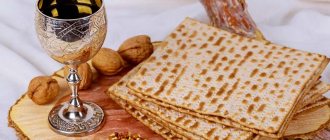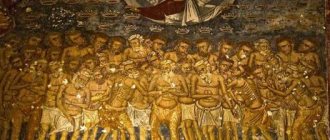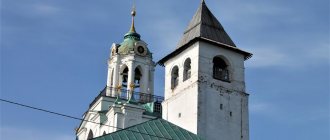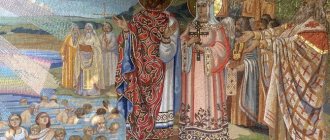- Reports and messages
- Miscellaneous
- Easter
Easter is the brightest and most interesting holiday not only for children, but also for adults.
Many people know that it was on this day that Jesus Christ was resurrected. Many traditions and the very celebration of this day have lost their effect in the modern world. Still, many try to observe this holiday, bake Easter cakes and paint holiday eggs. The Easter holiday has always been the most significant day for man; it is not only associated with the resurrection of the son of God. On this day, strict fasting ends. During such a fast it was impossible to have fun and eat many foods; people stuck to a diet and refused heavy and fatty foods. But when the fast ended, festivities were held and large tables were set with a huge variety of delicious dishes. Therefore, many holidays were postponed and celebrated after the end of Lent. On the day of Easter itself, believers held a procession of the cross, and an all-night vigil service was held in the church. After this, people illuminated the food in the temple and placed it on the festive table. Today this tradition has also been able to survive. On the bright holiday of Easter, it is customary to say “Christ is Risen” when meeting, and to answer “Truly He is Risen.” Just before Easter, Holy Week always begins. It is from this period that the real preparation for the holiday begins. Housewives do general cleaning in their homes and purchase ingredients for Easter cakes and other sweets and delicacies. On Good Friday, everyone remembers the death of Jesus Christ and visits the temple. And on Saturday night they bless Easter cakes and pray all night.
Before Easter, housewives decorated their houses, after which the whole family had family gatherings at the festive table. In addition to Easter cake, painted eggs are placed on the table. Initially, they were painted red using onion skins. And a little later, with the help of various food dyes and other decorations, Easter eggs acquired more and more new colors. Why were eggs originally painted only red? And the answer is very simple. According to legend, when Christ was resurrected, Mary Magdalene came to tell the emperor about it. He didn't believe it, of course. He had an egg in his hands, and the emperor said that he would believe in resurrection when the egg turned red. The egg turned red, and that’s how the tradition began.
As for the Easter cake itself, it was originally made from cottage cheese. The dish was shaped into a pyramid and then decorated with fondant. Housewives added a variety of spices, eggs, nuts and raisins to the cottage cheese for the Easter cake. This gave the dish a good taste and smell. Even today it is believed that Easter is a big holiday. People continue to go to churches and honor Christ. Visiting cemeteries became an integral part of Easter. It is here that people come to visit their deceased relatives and leave a piece of Easter cake, sweets and colored eggs. After this, the main celebration of Easter will be at home at a large table, with the whole family.
History of the origin of the holiday
The name of the holiday comes from the word Passover. In Hebrew it meant “exodus,” “deliverance” from death through blood sacrifice. Jews began to celebrate it long before the Nativity of Christ. In terms of the time of its occurrence, it coincides with the exodus of the Jews from Egyptian slavery. The background to the origin of Passover is outlined in the book of Exodus (chapters 3-10).
The Orthodox holiday began to be celebrated later. Christians celebrate the day of the Resurrection of the Son of God, who sacrificed himself for the salvation of all mankind.
Jesus was crucified on the cross by religious leaders. The reason for the execution was envy.
Crowds of people always followed the Son of God. He gave them love, understanding, forgiveness. He healed diseases and performed miracles. Jesus was slandered, illegally captured and executed after an unjust trial. His crucifixion is an attempt to destroy Christianity on earth.
Old Testament Passover
The history of the Old Testament Passover is described in chapters 11-14 of the book of Exodus. Attributes of her celebration:
- healthy lamb without defects (male gender);
- the blood of the lamb on the doorposts;
- bread baked without yeast;
- bitter herbs (green onions, garlic, other herbs);
- hasty food.
Those Israelites, into whose house the punishing Angel did not enter, were freed from the slavery of Pharaoh. After the 10th plague, he feared the wrath of the Lord and released the Jews into the desert. The people of Israel began to celebrate the day of liberation from Egyptian slavery every year, observing the instructions of the Lord.
Easter lamb
On the day of the tenth plague of the Lord, every family of Israelites living in Egypt had to kill a lamb. Do not disturb his bones. Apply the blood of the sacrifice (lamb) to the doorposts. Bake the meat, eat it with your family all night, drinking wine and eating unleavened bread. In the morning, burn the lamb bones.
Moses conveyed this instruction from the Lord to the Jews. The Angel of the Lord went around all the houses of the Egyptians that night and killed all the firstborn (babies, domestic animals). He did not enter the homes of Jews. They were marked with the blood of a sacrificial lamb. From that day on, the Passover lamb became a symbol of deliverance from death, a symbol of the holiday.
Easter in the New Testament
The era of the New Testament is described in the Gospels (Mark, Matthew, John, Luke). They contain chapters devoted to the history of the appearance of the New Testament Passover. The celebration commemorates the resurrection of Christ. Jesus ordered that his death on the cross be remembered until he appeared on Earth for the second time. Christ ascended to heaven on the 40th day after his resurrection.
The cessation of Old Testament sacrifices
Christ was crucified at the time when the Jewish Passover was celebrated, so Jewish and Christian holidays are celebrated almost at the same time. Jesus is the Lamb of God. He was killed for the sins of all people. The blood of Christ is the blood of the New Testament.
See also
What date is Good Friday celebrated in 2021?
Early Christianity
The place of origin of early Christianity was Palestine. Christianity emerged as a movement within Judaism. It was based on the teachings of Jesus. They supported it by faith in the resurrection of Christ from the dead. The beginning of early Christianity (the Apostolic Age) dates back to the 1st century AD. e., its development and formation occurred in the 2nd-3rd centuries.
First Ecumenical Council
For the first 300 years, followers of Christ (Christians) suffered persecution. In the 4th century the persecution ceased. Problems arose within the Church of Christ—heresies (false teachings). To combat them, Ecumenical Councils began to be convened. The first took place in 325 in the city of Nicaea. The result of the work of 318 bishops who came from around the world was:
- exposure of the false teachings of Arius;
- the adoption of 20 canons regulating issues of church government and discipline;
- resolving the issue of the day to celebrate Great Easter.
According to the resolution of the First Ecumenical Council, it was forbidden to celebrate Bright Sunday on the same day as the Jews. In 325, Easter was celebrated on March 22, the first Sunday after the vernal equinox.
Middle Ages and Modern Times
In Rome, new dates for the celebration were established. Beginning in 1582, Catholics began to celebrate Bright Sunday before Jews and Orthodox Christians.
Modernity
In 1997, they discussed a project to reform the date of the holiday celebrated in honor of the resurrection of Christ. They proposed making it uniform for the entire Christian world. The reform was not adopted due to the lack of consensus. In Russia, Georgia and the Orthodox churches of Serbia and Jerusalem, the annual dates of celebrations are determined according to the Julian calendar.
History of Easter
Easter is mentioned in the Bible.
In the Old Testament, Passover (from Hebrew pesah - “passing”) was the day when the Jews, under the leadership of Moses, managed to get out of Egypt.
In the New Testament, Easter takes on a new meaning. It describes the Passover sacrifice of Jesus and his resurrection (on Sunday).
From that day on, Jesus represents the Passover lamb, that is, the lamb that was sacrificed to God.
Jesus embodied this sacrifice and gave new meaning to the relationship between God and people. Human sins were washed away.
Meaning for Christians
The meaning of this religious holiday is eternal life. By His resurrection, Christ gave it to his followers. It was first celebrated 2000 years ago. Easter celebrates the resurrection of Christ. It means:
- liberation from death;
- acquisition of the spiritual world.
The Russian people, along with church rituals, have acquired many superstitions, customs, and traditions associated with the days of celebrating Easter Sunday.
Why do we bake holiday cakes?
Festive Easter cake is a type of church artos - yeast bread with the image of Christ. After the Ascension of Christ, the apostles left part of the bread for the son of God at meals, thereby depicting his presence at the dinner table. Catholics bake holiday bread from shortcrust pastry and call it “baba”.
Photo: Orthodox family praying at the table with Easter cakes / babiki.ru
The word “Kulich” comes from the Greek kollikion, which means “round bread”. This word is found not only in Russian. The Spanish call homemade artos kulich, and the French call it koulitch.
How to calculate the date of Easter?
The first calculations of the date of Easter were made by learned men who lived in Egypt. They used their intimate knowledge of the solar and lunar calendar. Based on the 19-year lunar and 28-year solar cycles, they created Easter - a system for determining the day of the holy holiday.
Every 532 years the circle of the Sun and the circle of the Moon repeat. This period is called the Great Indiction; the current one, the 15th in a row, began in 1941. To make calculations, clergy use the Paschalia 532 table.
The calendar date of the celebration is not constant. It falls on the first Sunday after the spring full moon, which occurs on or after the vernal equinox. Christian Easter is always celebrated a week later than the Jewish one. This is taken into account when calculating. The holy day falls on spring dates:
- according to the old style from March 22 to April 25;
- according to the new style from April 4 to May 8.
Holiday traditions
All ardent believers prepare for this holiday very carefully and not at all easily. Before Easter there is Great Lent, which lasts for 40 days and during this time the human body and soul must come into order. This period was set because Christ spent 40 days in the desert and suffered; believers also suffer during these days, depriving themselves of tasty food and constantly praying for forgiveness.
The most important week of all these forty days is the last week or Holy Week. The main days are Thursday, Friday and Saturday.
Maundy Thursday: On this day, Christ shared his last meal with his disciples. And according to modern traditions, it is customary on this day to put everything in order, the house, and oneself. On Thursdays they bake Easter cakes and other sweets, paint eggs and do it with great love.
Good Friday: the day when Christ was crucified. Pontius Pilate had the opportunity to release one of the prisoners, he hoped that it would be Yeshua, but the people chose Barnabas and Pilate had no choice. The body was taken from the cross and wrapped in a shroud, placing it in a cave until the Sabbath rest. On this day you can’t eat or do anything practically; it’s a mournful day.
Holy Saturday: This is the very last day before Resurrection and Easter. For all believers, this day is both sorrowful and joyful, since tomorrow he will return to life and prove to everyone that he was right. Pontius Pilate gave the order on this day to place a guard at the place where the body of Christ lay, so that no one would take it away and say that he had risen.
Easter: on this day the angel of the Lord appears, scaring away all the guards and announcing that Jesus has risen.
Thomas' week: on this day, the unbelieving Thomas became convinced of the truthfulness of Christ. Eight days later he appeared to his disciples and now there was nothing to doubt.
40 days: in them Christ appears to his disciples and instructs them on the true path. And finally, on the fortieth day, he ascends into the sky. Ten days after this, the apostles received the gifts of the Holy Spirit.
Easter symbols
The holiday has symbols that came from antiquity. Their appearance is associated with specific historical events and legends.
Easter egg
Mary Magdalene brought the emperor the news of the resurrection of Christ. She brought the egg as an obligatory offering. Tiberius said that it would be more likely for a white shell to turn red than for a dead person to come to life. After his words, the egg turned the color of blood and became a symbol of the Resurrection.
See also
What date will Maslenitsa be in 2021, customs and traditions of celebration
Lamb of God
On the night of the 10th plague, God ordered the Jews to cook lamb. Put marks on the door frames with his blood. Baked meat is eaten among the family. What is not eaten should be burned before sunrise. The angel who kills all the firstborn did not enter the houses marked with the blood of lambs. The children of the Jews survived, but the firstborns of the Egyptians all died. During the Old Testament, the blood of the lamb became a symbol of liberation from death.
Easter and Easter cakes
Easter is made from sweet cottage cheese. They give it the shape of a truncated pyramid. It symbolizes the Holy Sepulcher. It is decorated with images of a spear, a cross and the letters “ХВ”, which means Christ is Risen. Since the time of the New Testament, cottage cheese Easter has been placed on the table instead of the Paschal lamb. It symbolizes that along with the Old Testament, the tradition of bloody sacrifices for Easter passed away.
Kulich is a tall, round bread baked from sweet yeast dough, topped with white glaze. Raisins, candied fruits, and nuts are added to it. It represents the bread that Christ shared with his disciples on the night before his execution, the transition from the Old Testament to the New. Easter cake says that the doors of the house are open to the Savior.
Holy Fire
During the Easter service in churches, a large candle is placed next to the altar. She is a symbol of Christ, and her fire symbolizes his resurrection. After the end of the festive service and the rite of blessing Easter food from the Holy Fire, believers light candles. They take them to their homes. This action is a sign of spiritual cleansing and acceptance of Christ’s sacrifice.
Easter tree
It was customary in Europe to decorate trees growing on the street for Easter. In Russia, willow trees were decorated with apples, sweets and artificial flowers and carried in sleighs at the head of the festive procession. After its completion, the branches were distributed to the people. They decorated houses. Now the custom of decorating the Easter tree has been revived.
Where did the custom of dyeing eggs for Easter come from?
The traditional custom for Easter is to paint eggs red. Because Mary Magdalene came to the Roman Emperor Tiberius and brought gifts that contained eggs. Mary Magdalene uttered the words, giving Tiberius a basket of gifts: “Christ is Risen!”, and he replied that this was impossible, just as an egg cannot turn from white to red, and the egg immediately turned red. Since then, eggs have been painted red, which also symbolizes the blood of Jesus Christ shed for us.
Don't miss: How to make slime at home: 5 easy and simple recipes
Easter traditions and customs in Russia
Easter in Russia has always been considered a day of great joy. Rituals and ceremonies are associated with its celebration.
Lighting eggs and Easter cake
On Holy Saturday and on the morning of Easter Sunday, food is blessed in churches. When going to the festive service, believers put Easter cake and a few colored eggs in a basket. They break their fast with blessed food after Lent, and it is customary to give out colored eggs as alms.
Christening
On Easter Sunday it is customary to take walks and visit people. When meeting, they give Easter eggs. The giver says the Easter greeting - “Christ is Risen!” The recipient of the gift responds, “Truly He is Risen!” After this, they kiss Christ three times.
Other folk customs for Easter
On Easter, people rolled “painted eggs” along special trays with gutters. The players took turns rolling the eggs. The winner was the one whose egg remained intact. He took the broken Easter egg as booty.
Festive table for Easter
Preparing the festive table lasts several days. On Maundy Thursday and Holy Saturday, Easter cakes are baked, eggs are boiled and painted. On Bright Sunday, at least 40 dishes are placed on the table according to the number of days of Lent.
Easter procession
At the head of the procession is a clergyman carrying a cross. The procession begins shortly before 00:00 on the night of Saturday to Easter Sunday. Believers circle the temple three times. The doors to it are closed. This is symbolic. Christ rose again on the 3rd day.
See also
The date of celebration of Paratrooper Day in Russia in 2021 and how it is celebrated
After the procession stops in front of the doors for the third time and the news of the resurrection of the Savior is announced, the doors swing open. Believers enter the temple, the solemn service begins.
Easter bell
Any believer can ring the bells on Easter and all days of Bright Week. For this purpose, churches set aside a certain time after the end of the morning service or before the start of the evening service.
When is Easter celebrated in 2021?
Easter is a special solemn day in spiritual and church life. In 2021, the holiday is celebrated on April 28.
The Easter religion is based on the principles of all Christian teaching and, in general, all biblical history. In addition, the Orthodox celebrate this great holiday in honor of the event of the Resurrection of Christ. Therefore, the holiday of Holy Easter still bears such names as the Bright Resurrection of Christ and the Resurrection of Christ.
Easter is always usually celebrated after Lent and Maslenitsa. But there is no exact date. After all, it moves from year to year and is determined according to special calendars. Here everything depends on the relative spring equinox and full moon. And it always falls on Sunday.
Traditions of different countries
In every European country, the Bright Christian holiday has its own traditions. In Austria, Easter markets are held where they sell figurines of biblical characters made of wax, eggs and hares.
In Italy, observing the traditions of Orthodoxy, they celebrate Bright Sunday with their families.
Festive tables are bursting with Neapolitan pies (cazziello), sweet flatbreads, and roasted lambs. In Spain, during Holy Week, processions of repentant sinners are organized. People's faces are not visible; they wear caps with slits for their eyes.
Easter: signs and beliefs
If:
- If all the snow melts by Easter, there will be a good harvest this year.
- On holiday, if you feed the street birds with bread crumbs, you will be blessed with good luck and wealth all year long.
- If you manage to see the Easter sunrise, then you should expect good luck in business.
- A housewife who bakes successful Easter bread will have prosperity and well-being in her home.
- After the service in the temple, it is necessary to extinguish the candle for good luck. A candle that goes out during a service is a bad omen.
Easter is a great Orthodox holiday. In addition, on this day Christians attend services where Easter cakes and colored eggs are illuminated. And people are trying to free themselves from household chores and spend time with their loved ones.
Holy Fathers about Easter
From the theological works of the Holy Fathers, believers learn about the history of the holiday and its canons. Preaching the Resurrection of Christ is of great importance.
Gregory the Theologian
The years of the saint's life (326-389) fell on the period of the formation of Christianity. At the age of 26, he was baptized and devoted his life to serving God and people, and passionately fought against supporters of Arianism.
In the last years of his life he wrote the best of his theological works (Homily 45) - On Holy Easter. In it, he interprets the Holy Day as the main event of the church year. Puts it on the same level as the Baptism of the Lord. In his works, he draws an analogy between the symbols of the Old Testament and New Testament Easter, and identifies the transition from one Testament to another as an ascent from earth to heaven.
Other authors
The genre of the Easter story was widespread in Russian culture. About how Christ descended to earth after the resurrection, they wrote:
- M. E. Saltykov-Shchedrin - “Christ’s Night”;
- V. A. Nikiforov-Volgin - “Easter Eve”, “Bright Matins”, other works;
- N. Gogol - “Bright Resurrection”;
- I. Potapenko - “Three Easters”.
All literary works speak of the victory of goodness, mercy, and the possibility of internal, spiritual rebirth.
The Holy Fathers tell about the Christian holiday in their writings:
- Meliton of Saradia - “The Tale of Easter”;
- Hilarion - “Easter Imperishable”;
- Fyodor the Studite - “About Easter”;
- Gregory of Nyssa - “Words for Holy Easter.”
Connection with Christian Easter
Christian Easter is inextricably linked with the life, death and resurrection of the son of God Jesus. Christ was born in the small village of Nazareth, near Bethlehem. When he was 30 years old, he was baptized on the Jordan River by John the Baptist. Three years later, Jesus gathered 12 of his closest disciples at the Passover feast, to whom he said that soon one of them would betray him, thereby predicting the betrayal of Judas.
Photo: Procession of Jesus Christ to Mount Golgotha / catholic.tomsk.ru
The day after the Last Supper, Pontius Pilate, the Roman prefect of Judea, ordered the capture of Christ, tortured him and executed him by crucifixion. The priests were jealous of the Son of God, because crowds of believers followed him, and the authorities wanted to completely eradicate Christianity. After being beaten with whips and “crowned” with a crown of thorns, the exhausted Jesus put the cross on his back and carried it to the top of Mount Golgotha. The Way of the Cross of Jesus through old Jerusalem and the serpentine mountain became one of the prototypes of the Christian procession.
The death of the son of God on Mount Golgotha is a kind of allegory of the murders of sacrificial lambs. Just as the Jews sacrificed one-year-old blameless lambs, so Jesus gave his life for the remission of sins and the cleansing of human souls. Christ died after the Jewish Passover, on Friday, which was called Passion.
What should not be done on Easter Sunday?
On the day of celebration, you cannot do household chores that can be done later:
- wash;
- sew, embroider, knit;
- do cleaning;
- work with soil and plants in the garden.
The main Easter prohibition concerns relationships between people. On Easter you cannot create conflict situations or swear. Laziness on Easter Sunday is considered a sin. The day should be devoted to visiting elderly relatives, close friends and acquaintances.
Popular message topics
- Cities of the Golden Ring of Russia
The Golden Ring of Russia is a Russian tourism project that united ancient Russian cities into the Union of the Golden Ring. The name of this “family” was given by art critic Yuri Bychkov 50 years ago. There are cities of the small ring - the main list of cities, - Forest fire (causes and consequences)
Forest fires are natural disasters that destroy trees and plants. They also harm people, their physical and psychological health. Most often, a person is able to prevent a fire without taking certain actions, - mouse
is a large family from the class of mammals, representatives of the group of rodents. In the process of evolution, the mouse's body has adapted to its immediate lifestyle. The front legs are very well developed for digging holes,
Folk signs for Easter
To get married, a girl on Maundy Thursday must wash herself and dry herself with a new towel. On Saturday, put it in an Easter basket and take it for blessing. Distribute food and towels to the poor.
On the pure day of Holy Week, Thursday salt is prepared. It helps against damage and illness. It is poured into a canvas bag, heated for 10 minutes in a warm oven, and blessed in the temple. Salt retains its magical properties throughout the year. The meaning of the Holy Easter holiday is the resolution of death and the mortification of hell. This is stated in the Catechetical Sermon (St. John Chrysostom), it is read during the Easter Liturgy.
How the Resurrection of Christ is celebrated in the Orthodox Church
Before the onset of Easter, believers carefully clean their houses and apartments, including washing windows and hanging fresh curtains. Preparations for the celebration (dying eggs and baking Easter cakes) are usually completed by Good Friday.
After the church service, people go home for the celebration. And the post ends. Therefore, from this day forward it is allowed to eat milk and meat again. The holiday continues for another week until it is possible to organize weddings and other special events that are prohibited during the Lenten period.
Christ is risen! - Truly Risen!
These words are used by everyone to greet each other during the holiday, and they are first pronounced by the priest, who at midnight notifies the believers that Christ has indeed risen. It happens during the Easter service, after which you can dedicate eggs, Easter cakes and any other food.
It is to her that everyone at the festive table will break their fast in the morning. Adults and children christen themselves with colored eggs, and everyone eats for pleasure. By the way, there are many legends associated with the tradition of dyeing eggs; you can read them in the article about interesting facts about Easter.
This order of celebration is widespread mainly in Ukraine, Russia and Belarus, but in other countries Easter is celebrated completely differently. In principle, its meaning remains unchanged, but everyone’s traditions are different.
04/28/201904/27/2019 TanyaVU 2844
